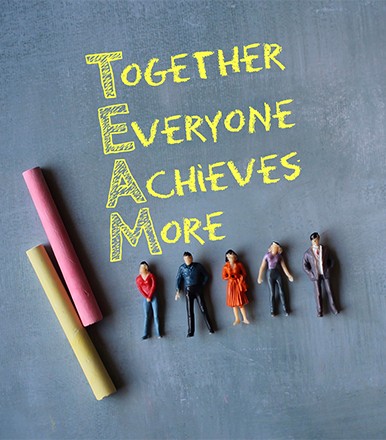The human history is a very vivid image painted by different generations. Each of them showcases a different hue and shade from their beliefs, cultures, and ideologies that define who we are as a society. The subtle nuances and sometimes stark contrasts that distinguish one generation from another drive our societal evolution. The “generation gap” that arises from these differences is a natural part of human nature, an unstoppable force that pushes us forward on the continuum of progress.
Coined in the 1960s by John Poppy, the term “generation gap” gained prominence during a time of societal upheaval. Sociologist Karl Mannheim introduced the concept, emphasizing how each generation perceives the world, driven by the unique historical and cultural contexts they inherit. Fast forward to the 21st century, and the term remains as relevant as ever, navigating the ebb and flow of human evolution.
The Generational Odyssey:
Delving into their names and values is important to understand these generations better.
Greatest Generation is the first on the list. This is the title given to people who were born between 1901 to 1927. They are closely followed by the Silent Generation (1928-1945). The people born in these generations endured the storm of World Wars and economic depression. These generations are the builders of society in many ways, as despite facing all the adversities, they managed to lay the stable foundation for the next generation, the Baby Boomers.
People of this generation were born between 1946-64 and witnessed the post-war world chaos and the seismic shift from imperialism to modernism. The name is derived from the rapid growth in the population of babies worldwide post World War II. This generation is known for its optimistic spirit of the post-war period and is characterized by its strong work ethic.
The boomers were followed by Generation X (1965 to 1980). Often overlooked due to the generations that came before and after them, this generation needs to be paid the respect it deserves. After all, they are the architects of the tech revolution. Gen X embodies a pragmatic and skeptical worldview and is the pioneer who laid the foundation of the digital age.
The next generation on the list is the most famous and talked about generation. There are no brownie points for guessing because it is Generation Y, more commonly known as Millennials (1980-1997). As the name suggests, Millennials witnessed the end of a decade, a century, and a millennium and were still barely twenty! They are the most tech-savvy generation as they navigate through the evolving landscape of technology and communication. Millennials are characterized by resilience, adaptability, and a penchant for innovation.
Next in line are the digital natives called Generation Z (1997 to 2012). Born in the era of smartphones and social media, they view the world through filters that are different and more colorful than anything their predecessors had. People pick up on Gen Z for their casualness towards what the older generation would have called the “weight of the world.” What they fail to see is that this generation is just not made from the same fabric as the ones before them. They are cavalier youth, wanting to explore everything the world offers. Gen Z is characterized by their innate fluency in digital communication, quick adaptation to ever-evolving technology, and a global perspective shaped by online connectivity.
If you thought Generation Z was different, think again because the next generation believes technology is their birthright. Generation Alpha (2013 onwards) was born in an era where screens are the storytellers, and technology is their guide to everything in life, with knowledge on any particular topic just a Google search away. With the world at their touchscreen fingertips, Generation Alpha is intertwined with artificial intelligence, environmental consciousness, and global connectivity. As the torchbearers of innovation, these young minds embody adaptability, heralding a future where the boundaries between the real and the virtual dissolve, and possibilities unfold with each keystroke and touch.
In a collective study of each generation and the events that unfolded during their time, each generation weaves its narrative through cultural and historical influences. The Great and Silent Generation, marred by war, valued duties and sacrifice above everything else. However, Boomers, on the other hand, had it easier. Hence, we witnessed the rise of counterculture and individualism during their time.
Generation X, trapped between traditions and technological advances, was more inclined towards adaptability. Meanwhile, Millennials, with their global village attitude, fosters inclusivity. Gen Z is shaping the world through technology, while the Alphas are growing in a world full of climate hazards and seeking sustainability.
Understanding the Gap Through Intervention of Technology
After understanding the generations, the final question remains: why the gap?
It is no coincidence that technological advancement in the late 20th and early 21st century has been pivotal to the phenomena we dub “The Generation gap” in today’s time. With a steady growth in technology, one would find that the earlier generations of the early 20th century had a similar lifestyle. The advancements, however, have been so on point in recent times that even people living one generation apart find themselves measurably different from one another.
While people call longer life expectancy a reason behind this ever-growing gap between two generations, the real devil lies in technological progress. This advancement has introduced people to the world outside their view. Earlier societies were not mobile. People tend to live in the same locale with little to no contact outside their community. Now, they can know about what is happening in a part of the world that they will never visit.
Unlike their predecessors, Gen Z and Alpha live in a globalized world where technology breaks geographical boundaries. The digital platform provides a window to diverse cultures, perspectives, and ideas, fostering a sense of interconnectedness.
The internet has also empowered these generations with immediate access to vast information. Unlike earlier generations that relied on traditional media, Gen Z and Alpha can curate their knowledge, shaping a more informed, albeit personalized, understanding of the world.
Furthermore, the screens have become more exclusive. In the earlier days, there used to be one television, sometimes in one community where everyone consumed the same and limited content. Today, that is not the case. Technology has separated and created groups based on what content people consume.
Technology has empowered them with powerful tools for self-expression and activism. From leveraging social media for advocacy to utilizing platforms to amplify their voices on global issues, these new generations actively participate in shaping the socio-political landscape.
This shift can be understood best by the remarks made by Author and Emory University professor Mark Bauerlein. He writes that teen nowadays have a different way of associating with their peers. This method is exclusive to them and was never experienced or practiced by teens who came before them. As a result, they find themselves in a bubble they have created around themselves. While Bauerlein believes, “For education to happen, people must encounter worthwhile things outside their sphere of interest and brainpower.”
Hence, it is very clear that the recent shift or gap is brought about by the advancement of technologies. The newer generation spends little or no time with their predecessors, eventually leading to them walking away from the community and starting afresh. While it may be a good thing for the world that wants to address new issues, it also makes them susceptible to repeating the mistakes from the past.
As we find ourselves amid different generations, the echoes of the past continue to impact our present. The generation gap is a natural part of our ever-changing human story, urging us to recognize shades in our shared picture. The past shapes how we live now adjusts to the present, and points to the future—a continuous flow where grasping the rhythm of each generation enhances our collective understanding. In the grand order of things, the generational interplay shall carry on, always shifting, always bringing us together.
Check out Hello Fitness Magazine. There is never a wrong time to go on a fitness quest. Contact us and allow us to assist you in leading a better lifestyle. Follow us on Instagram. We share the best Health and fitness-related Articles for information based on healthy eating, health and fitness recommendations, health problems and their solutions, human body fitness, and much more.











-cr-386x440.jpg)


